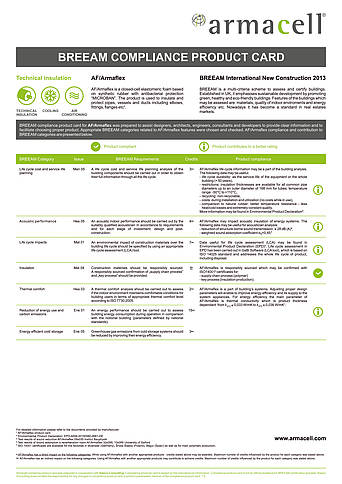Buildings for a sustainable future
Building shapes the environment. It is through building that the environment becomes living space for human beings. At the same time buildings represent significant interventions in the environment.
To respond to advancing climate change and meet growing energy needs, it is vital that resources are saved. Designing buildings with state-of-the-art environmental technology and HVAC equipment is increasingly seen as the way forward for the future.
Green building stands for sustainable architecture and the responsible use of resources. They can also be operated more economically and sold more profitably.

An overview of the most important green building schemes:
BREEAM® stands for Building Research Establishment Environmental Assessment Method and is the oldest and most widespread certification system for sustainable building. It was developed in Great Britain in 1990.
LEED®(Leadership in Energy and Environmental Design) is based on the British BREEAM scheme, was developed by the US Green Building Council (USGBC) and first introduced in 2000.
DGNB (Deutsche Gesellschaft für Nachhaltiges Bauen) is a joint project of the Germany Ministry of Transport, Building and Urban Development (BMVBS) and the German Sustainable Building Council (DGNB). It was introduced in 2009.
WELL Building Standard® is a performance-based system for measuring, certifying, and monitoring features of the built environment that impact human health and well-being, through air, water, nourishment, light, fitness, comfort and mind. It was launched in 2014.
Eurofins "Indoor Air Comfort" (IAC) label certifies building products with low VOC (volatile organic compound) emissions. The label particularly supports health and environmental aspects and promotes better indoor air quality.
Alongside the internationally recognized certificates, there are numerous other public and private initiatives on both a national and international level. BREEAM and LEED in particular have gained significance throughout the world in recent years and in many countries have become the recognized standard with national chapters and country-specific versions. Especially for larger construction projects of international companies, endeavours are now made to attain LEED certification, sometimes in combination with a national assessment.
Download our Compliance Product Cards here
